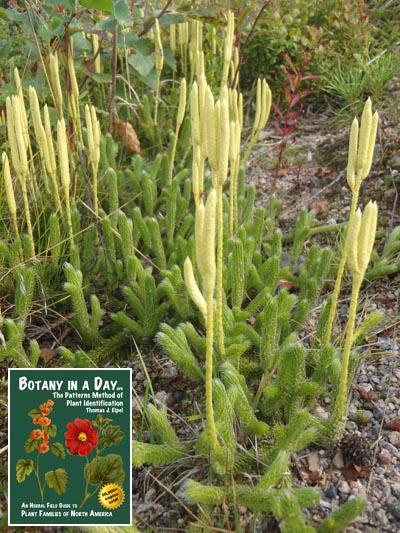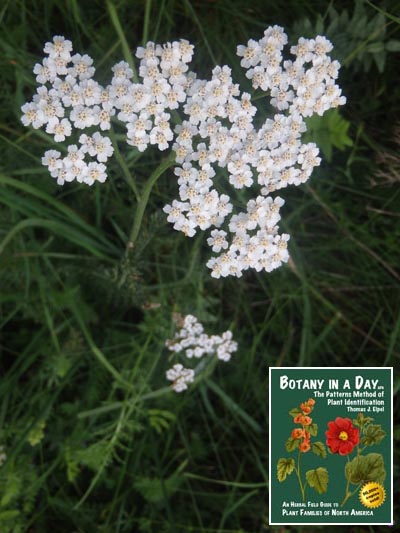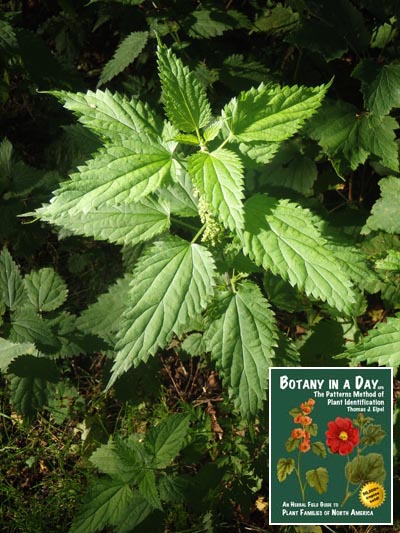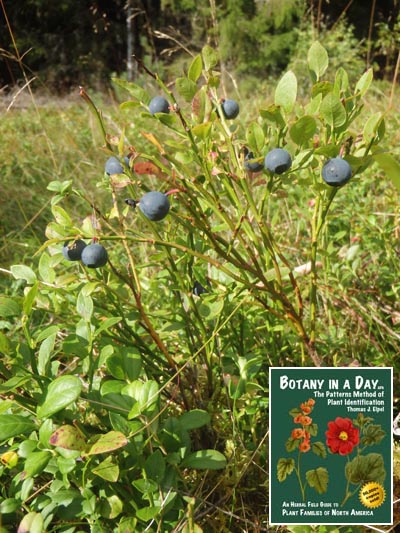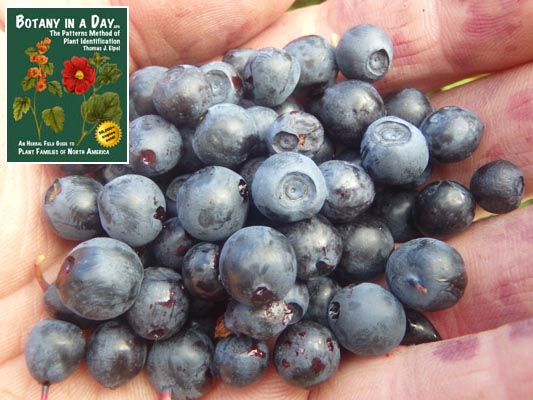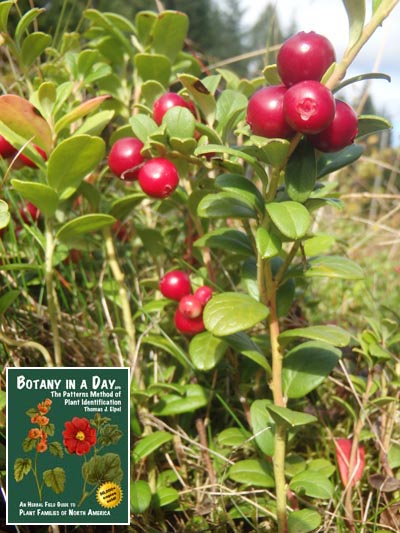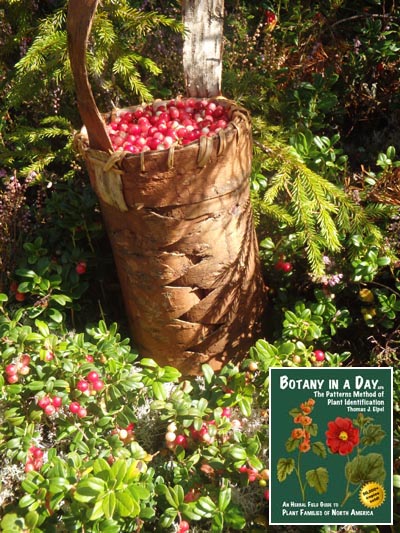Botanizing Sweden
Plant Identification in the land of Carl Linnaeus
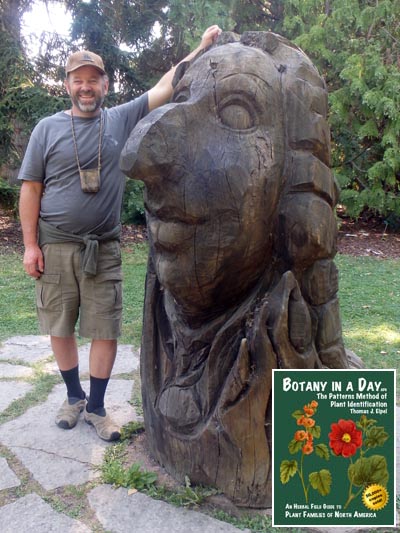
To a botanist, Carl Linnaeus is historic hero. Linnaeus (1707-1778) was a Swedish botanist and zoologist who established the system of binomial nomenclature used throughout the world today. Every known plant, animal, mushroom, fungi, or bacteria has a unique, Latinized two-part name consisting of a genus and species, additionally grouped together by relationships into families, orders, etc. up to kingdoms, and more recently, domains. For me, as the author of Botany in a Day, traveling to Sweden became an opportunity to connect with one of my personal heroes. I spent three weeks in August touring Sweden, photographing flowers everywhere I turned, while getting to know the land of Linnaeus.
 Touring with a Swedish girlfriend, we hopped in and out of Stockholm, first traveling to the island of Gotland for the Medieval Festival, then back to the mainland and slightly north to Uppsala, where Linnaeus lived and taught. Afterwards, we spent a week canoe camping down the Klarälven River followed by a few days with family around Mariestad, then rode the train to southernmost town of Trelleborg, which has an unexpectedly Mediterranean climate. Three weeks blew by like three days, and we returned to Stockholm for the departure home. Throughout our travels, I clicked away with the camera, taking as many pictures of flowers and fruits as my camera battery would allow between charges.
Touring with a Swedish girlfriend, we hopped in and out of Stockholm, first traveling to the island of Gotland for the Medieval Festival, then back to the mainland and slightly north to Uppsala, where Linnaeus lived and taught. Afterwards, we spent a week canoe camping down the Klarälven River followed by a few days with family around Mariestad, then rode the train to southernmost town of Trelleborg, which has an unexpectedly Mediterranean climate. Three weeks blew by like three days, and we returned to Stockholm for the departure home. Throughout our travels, I clicked away with the camera, taking as many pictures of flowers and fruits as my camera battery would allow between charges.
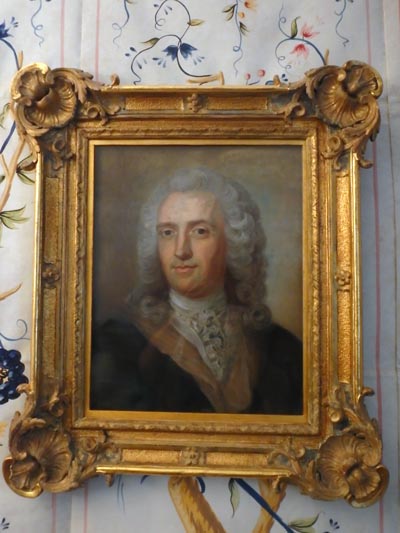 I've often heard people say, after moving from one home to another, that they have to start all over learning plants. I see it very differently. Related plants have similar characteristics for identification, and they often have similar uses, the central thesis behind Botany in a Day: The Patterns Method of Plant Identification. Learn to recognize plant family patterns, and suddenly most new species become instantly recognizable and strangely familiar, even when seeing them for the first time. Although Sweden may seem nearly on the other side of the world from my home state of Montana, we share a northern climate, and plants are very similar in both locations.
I've often heard people say, after moving from one home to another, that they have to start all over learning plants. I see it very differently. Related plants have similar characteristics for identification, and they often have similar uses, the central thesis behind Botany in a Day: The Patterns Method of Plant Identification. Learn to recognize plant family patterns, and suddenly most new species become instantly recognizable and strangely familiar, even when seeing them for the first time. Although Sweden may seem nearly on the other side of the world from my home state of Montana, we share a northern climate, and plants are very similar in both locations.
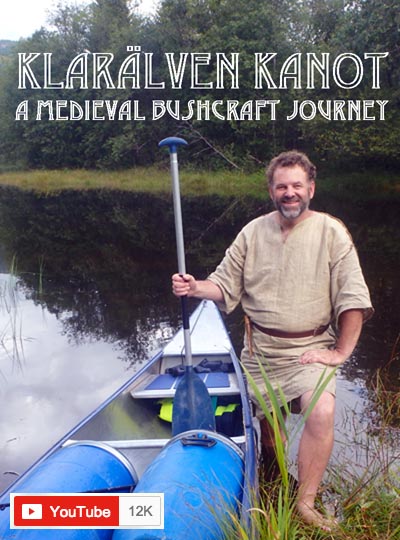 Technically, Sweden is much farther north, roughly the same latitude as Alaska, yet comparatively mild due primarily to warm equatorial ocean currents brought north by the Gulf Stream. Sweden is also very low in elevation and surprisingly flat. Kebnekaise, the highest mountain in Sweden, is far to the north and only 2,111 m (6,926 ft) above sea level. In comparison, my home in the Rocky Mountains is 5,600 feet above sea level and in the foothills of the mountains. Traveling around the southern third of Sweden, our highest elevation was 496 feet at Sysslebäck, where we started our canoe journey, not far from the Norwegian border. The Klarälven is Sweden's largest river, yet it was more like paddling an 80-mile, slow-moving lake than an actual river. This combination of low elevation and warm ocean currents gives Sweden a considerably milder climate than my regular stomping grounds in Montana.
Technically, Sweden is much farther north, roughly the same latitude as Alaska, yet comparatively mild due primarily to warm equatorial ocean currents brought north by the Gulf Stream. Sweden is also very low in elevation and surprisingly flat. Kebnekaise, the highest mountain in Sweden, is far to the north and only 2,111 m (6,926 ft) above sea level. In comparison, my home in the Rocky Mountains is 5,600 feet above sea level and in the foothills of the mountains. Traveling around the southern third of Sweden, our highest elevation was 496 feet at Sysslebäck, where we started our canoe journey, not far from the Norwegian border. The Klarälven is Sweden's largest river, yet it was more like paddling an 80-mile, slow-moving lake than an actual river. This combination of low elevation and warm ocean currents gives Sweden a considerably milder climate than my regular stomping grounds in Montana.
Botanically, there are many circumpolar plants that are equally native and common to either side of the world, some of which are pictured below on this page. There are also many newly circumpolar species that were introduced to North America from northern Europe, or vice versa, as detailed on subsequent pages of this article. Where species differ, it is often not by much. For example, the American quaking aspen (Populus tremuloides) is very, very similar to the European aspen (P. tremula), and the leaves of both species tremble or quake in the slightest breeze. The primary difference is that leaves of the European aspen have neatly scalloped edges, compared to the much smoother edges of the American aspen.
Thus, plant identification in Sweden is very much like plant identification anywhere in the northern states and Canada. Identifying new species there is largely a matter of recognizing who is related to who and finding the correct name for the European species.
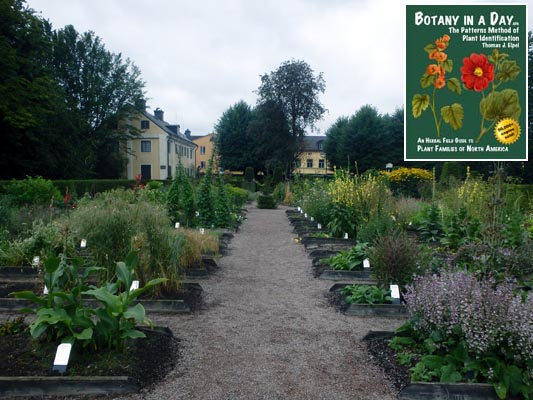 A highlight of the journey was touring Linnaeus' professorial home and botanical gardens in Uppsala. Linnaeus was knighted by the Swedish crown for his contributions to science, becoming known in Sweden as Carl von Linné. His restored gardens showcase species collected from around the world. Row after row of plants are mostly grouped according to genera, facilitating comparisons between related species. Labels for each plant make it easy to identify the plants, and to label photos of the plants. I took relatively few pictures there, preferring to save camera battery for species more widely encountered across the country.
A highlight of the journey was touring Linnaeus' professorial home and botanical gardens in Uppsala. Linnaeus was knighted by the Swedish crown for his contributions to science, becoming known in Sweden as Carl von Linné. His restored gardens showcase species collected from around the world. Row after row of plants are mostly grouped according to genera, facilitating comparisons between related species. Labels for each plant make it easy to identify the plants, and to label photos of the plants. I took relatively few pictures there, preferring to save camera battery for species more widely encountered across the country.
August is late summer in Sweden, limiting the number of plants in bloom, yet I found plenty to photograph. Recognizing family patterns was easy. Identifying species takes more time. I was able to identify most of them from available books and websites. While paddling the Klarälven, we stayed in the tent one rainy day, identifying flower photos on the camera through Google searches via the smartphone.
Because I was working with photos rather than live specimens, it was impossible to be 100 percent sure on the identity of some flowers, where closely related species appear nearly identical. Please send me an e-mail if you see any mislabeled plants that need to be corrected, or to inquire about purchasing high resolution photos of these plants. Thank you!
Botanizing Sweden
1. Intro and Circumpolar Species | 2. Exported Species | 3. Introduced Species
4. Cultivated Flowers | 5. Native Flowers | 6. Native Shrubs and Trees
Circumpolar Native Species
Common to North America and Europe
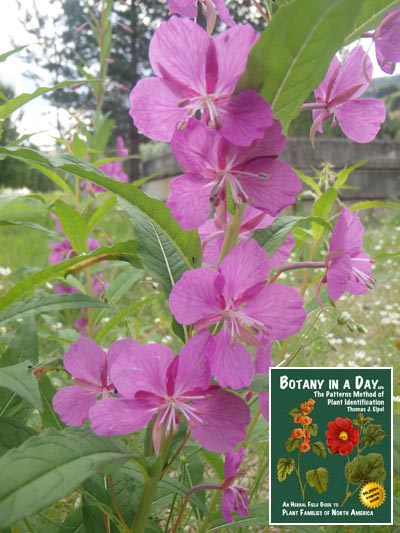
Fireweed. Chamerion angustifolium. Fireweed is a member of the Evening Primrose Family. |
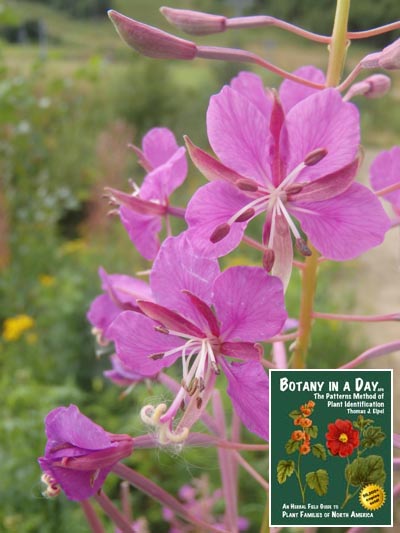
Fireweed. Chamerion angustifolium. |
|
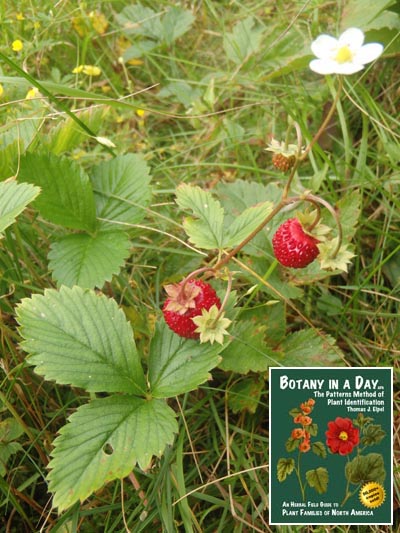
Wild Strawberry. Fragaria vesca. Wild strawberry is a member of the Rose Family. |
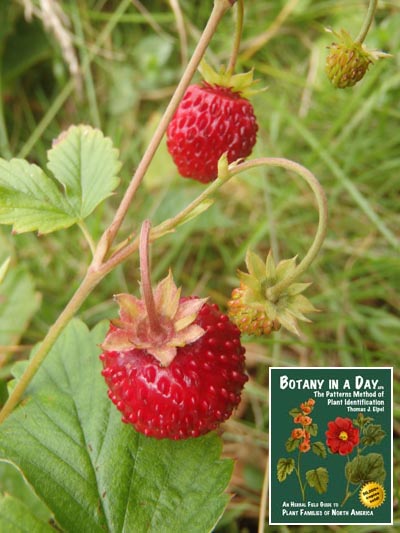
Wild Strawberry. Fragaria vesca. Wild strawberries are bigger in Sweden, yet equally delicious anywhere. |
|
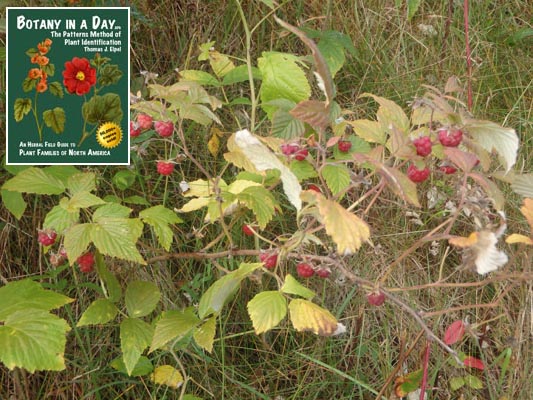
Raspberry. Rubus idaeus. Raspberry is a member of the Rose Family. |
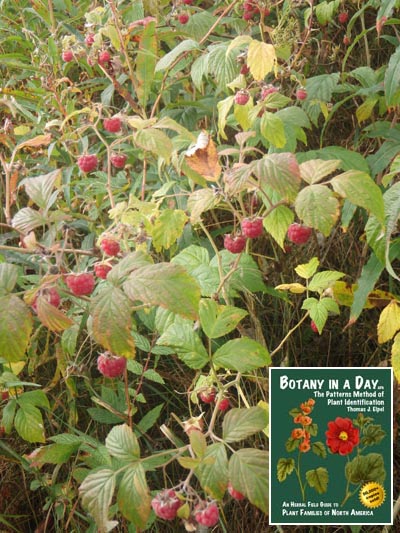
Raspberry. Rubus idaeus. |
|
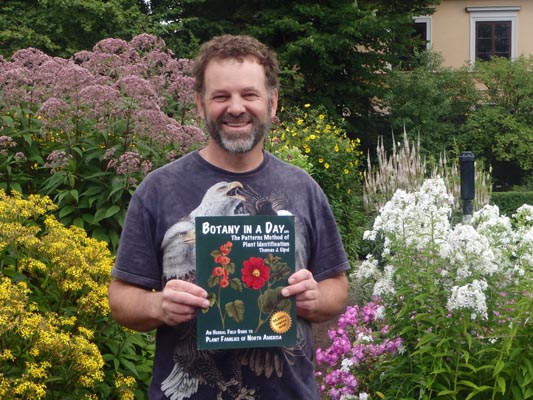
Author Thomas J. Elpel at Carl Linnaeus' professorial home and botanical gardens in Uppsala, Sweden.
Botanizing Sweden
1. Intro and Circumpolar Species | 2. Exported Species | 3. Introduced Species
4. Cultivated Flowers | 5. Native Flowers | 6. Native Shrubs and Trees

Check out Botany in a Day
See also: Sweden vs. America
Return to the Wildflowers & Weeds Home Page





 Wildflowers-and-Weeds.com
Wildflowers-and-Weeds.com 






 I've often heard people say, after moving from one home to another, that they have to start all over learning plants. I see it very differently. Related plants have similar characteristics for identification, and they often have similar uses, the central thesis behind
I've often heard people say, after moving from one home to another, that they have to start all over learning plants. I see it very differently. Related plants have similar characteristics for identification, and they often have similar uses, the central thesis behind 
 A highlight of the journey was touring Linnaeus' professorial home and botanical gardens in Uppsala. Linnaeus was knighted by the Swedish crown for his contributions to science, becoming known in Sweden as Carl von Linné. His restored gardens showcase species collected from around the world. Row after row of plants are mostly grouped according to genera, facilitating comparisons between related species. Labels for each plant make it easy to identify the plants, and to label photos of the plants. I took relatively few pictures there, preferring to save camera battery for species more widely encountered across the country.
A highlight of the journey was touring Linnaeus' professorial home and botanical gardens in Uppsala. Linnaeus was knighted by the Swedish crown for his contributions to science, becoming known in Sweden as Carl von Linné. His restored gardens showcase species collected from around the world. Row after row of plants are mostly grouped according to genera, facilitating comparisons between related species. Labels for each plant make it easy to identify the plants, and to label photos of the plants. I took relatively few pictures there, preferring to save camera battery for species more widely encountered across the country.